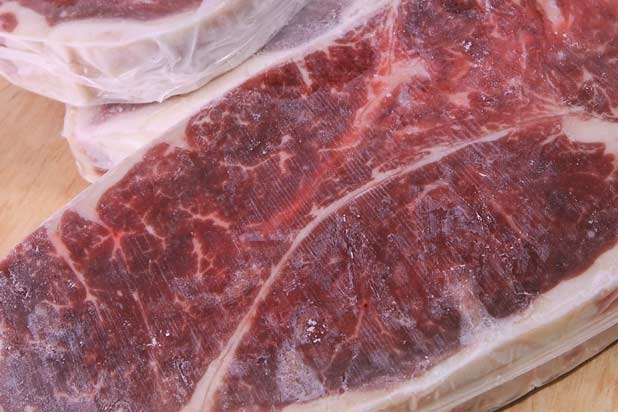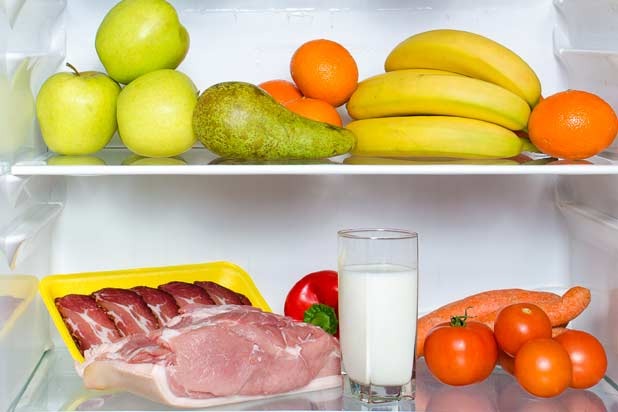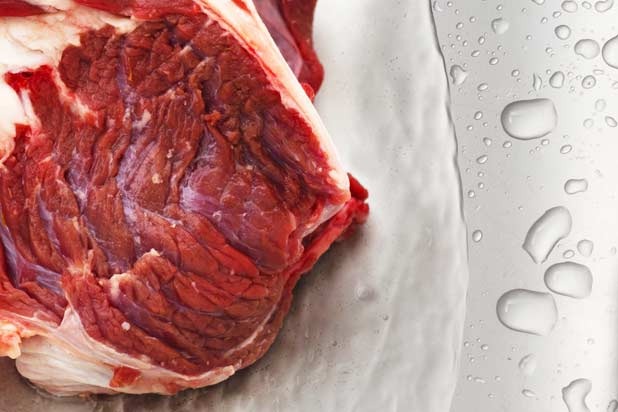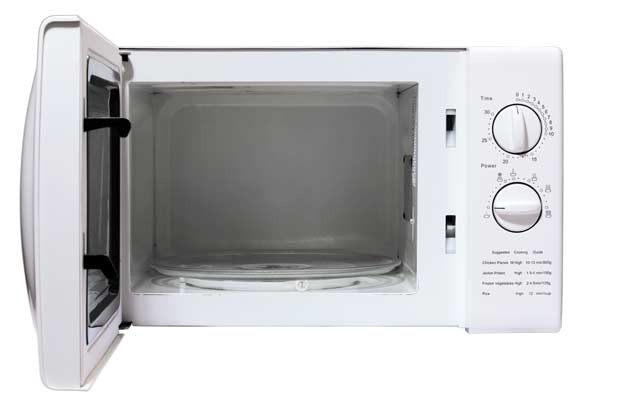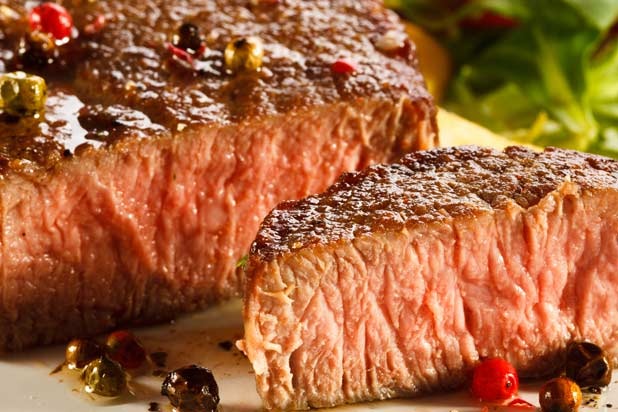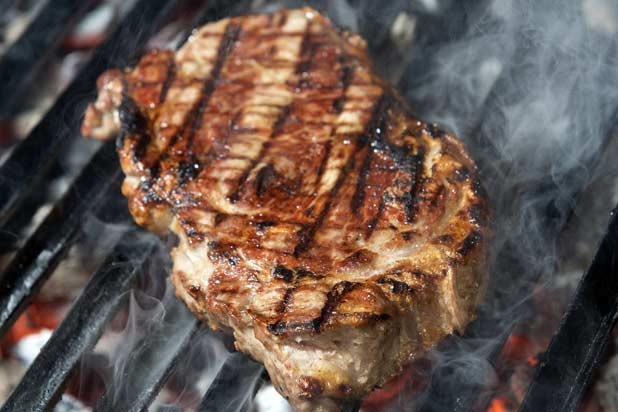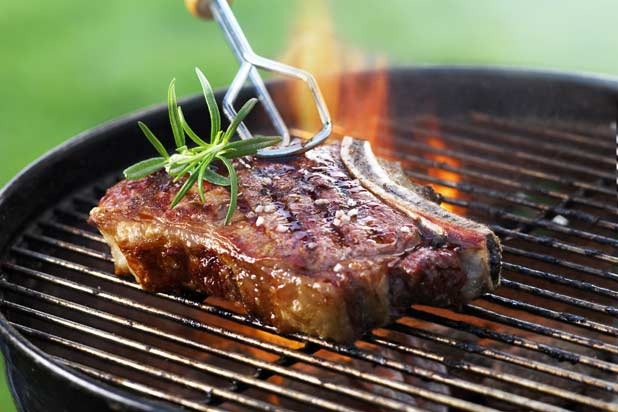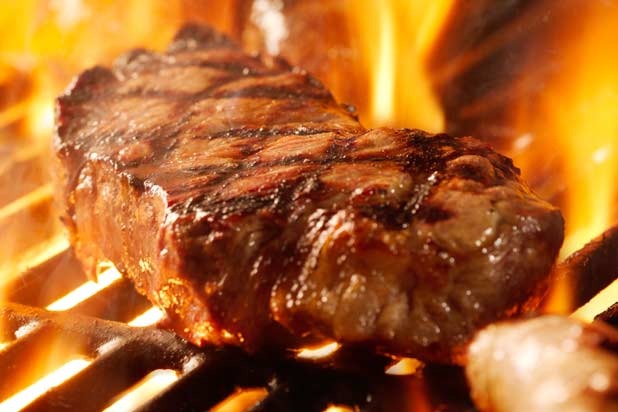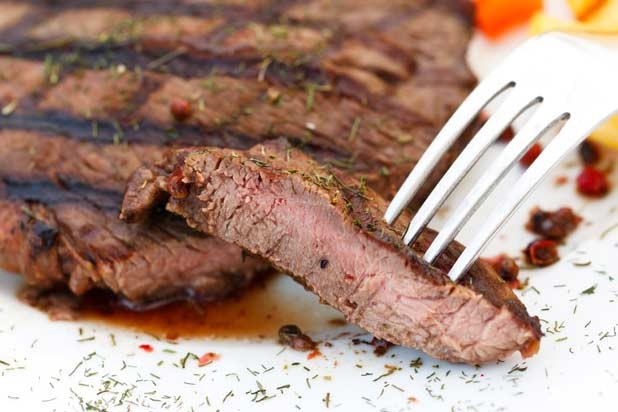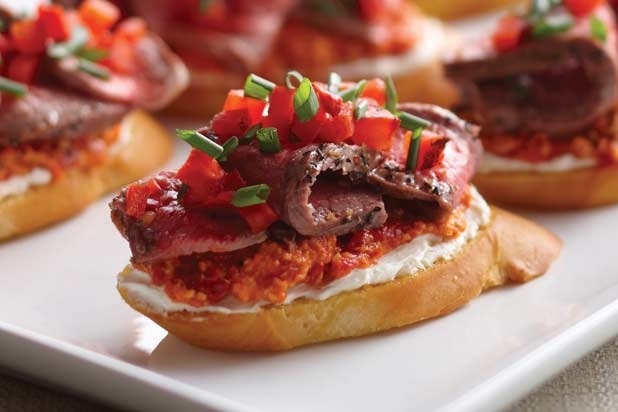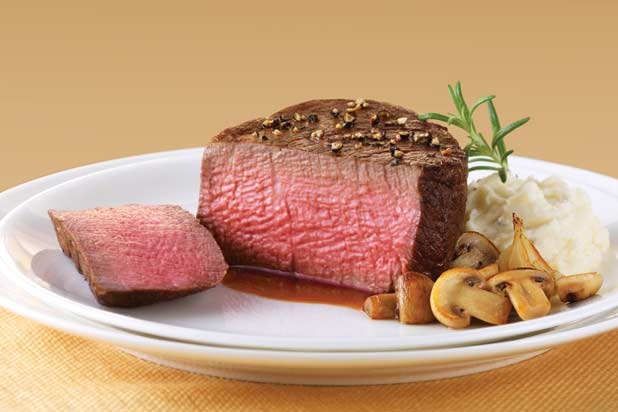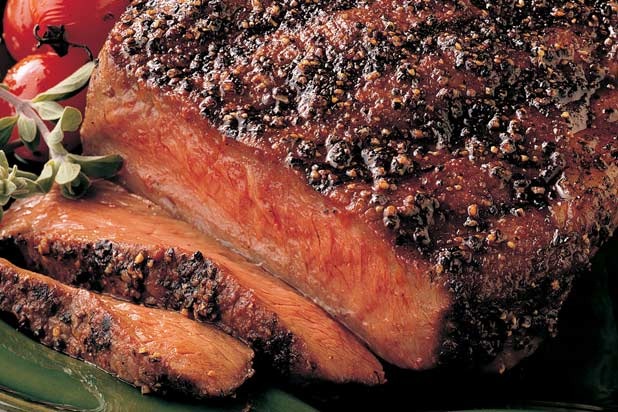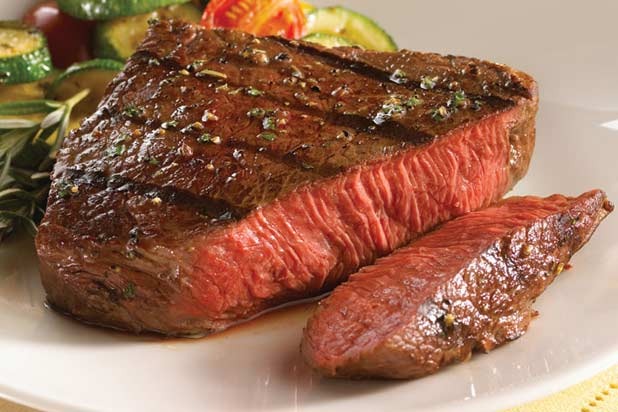How To Thaw And Cook Frozen Steaks Slideshow
The first step to making a great steak that's been frozen is getting it thawed, and so many people wonder how to do that. Marsh has three methods that he recommends, and he's ranked them in order of preference. The one method he does not recommend, though, is leaving it to thaw out at room temperature, which will require too much time and makes it more likely for bacteria to develop. Keep reading to read his top three methods.
Method #1: The Refrigerator
Marsh's overall preferred method is to let your frozen steak thaw in the refrigerator overnight. Allowing it to defrost slowly and at a controlled temperature lends to a juicier, more flavorful steak. Place the frozen steak in its wrapper on a plate or flat surface and allow it to defrost overnight on the bottom shelf of your refrigerator.
Method #2: Sink
If you've just gotten home and you need that frozen steak cooked that night, the sink is Marsh's second preferred method for thawing a steak. If you can spare the space, he recommends filling the entire sink with cold water and allowing the steak to defrost in its packaging. This allows the steak to defrost evenly and at a controlled temperature. Because the cold water will become slightly warm from sitting, this method works faster than the refrigerator and usually only takes about 20 minutes.
Method #3: The Microwave
Marsh strongly discourages using the microwave to thaw a steak. The heat from the microwave causes the steak to lose its natural juices, and the final product with be drier and less tender than had you used the refrigerator or sink. That being said, he knows that sometimes the microwave can't be avoided, and claims that oftentimes defrosting in the microwave goes wrong because people don't know how to do it correctly. To use the microwave, leave the steak in its packaging and watch it carefully as it defrosts. As soon as the out portions start to thaw, take it out and let it rest. The rest of the meat will thaw during standing time.
Prepare the Grill
When you're ready to start cooking, it's time to prepare the grill. The first step is to clean the grill and get it preheated. A hot grill is important for cooking steaks because of searing, and you'll see why later on. Along with getting it clean and hot, Marsh recommends lightly oiling the grill so that it helps with the searing process and prevents the steak from sticking.
Seasoning
Have you ever had your butcher tell you that all a fat piece of steak needs is a little salt and pepper for seasoning? Well, he's right, but unfortunately it's not always the case with frozen steaks. While the high water content of a frozen steak lends to a tender, juicy texture, it sometimes can weaken the steak's flavor. To help your frozen steak out a bit, Marsh recommends using seasonings like brown sugar, paprika, and cumin, or other marinating ingredients like Dijon mustard, soy sauce, and citrus juice to amp up the flavor.
Searing
You won't get a juicy steak without perfectly searing it, says Marsh, and this is especially true for frozen ones. By giving it a good, hot sear, it locks in all of the flavors and juices, and creates a charred, textured crust. In order to sear the steak well, place it on the hot grill and touch it as little as possible, allowing the grill to do its work. Marsh recommends flipping when the juices of the steak start bubbling up to the top of it, and to use the 60/40 rule, which means grilling the steak 60 percent on one side, and then 40 percent on the other.
Important Rules to Remember
When you're cooking, Marsh recommends closing the lid of your grill as much as possible. A closed grill helps lock in the true flavor of the steak, and it helps to prevent flare-ups, as well. He also recommends using a pair of tongs when cooking your steaks to help ensure tenderness, because a knife or a fork will end up damaging the cut of steak and drying it out.
Safety Precautions
While a nice, charred piece of steak is perfection, it doesn't mean that flare-ups are a good thing. Flare-ups apply too much high heat to a steak, and will end up burning it and drying it out. To prevent flare-ups, Marsh recommends keeping a spray bottle of water nearby so you can put the fire out whenever it strikes.
Determining When It's Done
Another challenge people face when cooking steaks is knowing when they're done, especially when they've been frozen. One method Marsh recommends is using the hand test to check for doneness by pressing the meat and getting a feel of its texture. Each type of desired doneness for a steak has a different feel, and Marsh outlines them below. Because a steak continues to cook when it's resting, Marsh recommends cooking them to a point when the steak tests slightly less than what's desired.
Rare: Soft and Wobbly
Medium-Rare: Springy Firmness
Medium: Very Firm and Unyielding
Of course, the only surefire way to know when your steak is done is to use a thermometer. Insert the thermometer into the thickest part of your steak and check the temperature to determine when it's at its desired doneness, keeping in mind that the steak will cook one to two more degrees while resting.
Rare: 120-125 degrees
Medium-Rare: 130 to 135 degrees
Medium: 140-145 degrees
Grilled New York Strip Crostini Recipe
Steak doesn't always require a fork and knife, and this recipe has you slice up tender grilled New York Strip steaks to serve on top of a crostini with whipped cream cheese and red pepper pesto.
Pepper-Mustard Filet Mignon Recipe
Make restaurant-quality filet with this peppery, mustard marinade. Served alongside a mushroom ragù and drizzled in claret sauce, you'll hardly believe you made this dish at home.
Teriyaki Tenderloin Beef Kebabs with Sticky White Rice Recipe
Tenderloin tips are exactly what their name says they are: tender. As the tip of a filet, they're considered scraps and are sold for cheaper. Amped up with a little seasoning, like the soy sauce, sake, and rice wine vinegar in this recipe, and they instantly outrank their filet counterparts.
Sweet-Rub Rib-Eye Steaks Recipe
These rib-eyes are coated in a sweet rub before being being grilled to perfection and served over a grilled square of a polenta.
Mustard-Glazed Top Sirloin Recipe
To get a tender, flavorful steak, this recipe marinates top sirloin cuts in a mixture made with sherry, lime juice, and soy sauce, and then coats it in a spicy mustard before grilling so that it gets a nice, crisp crust to its juicy interior.
